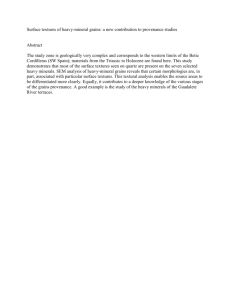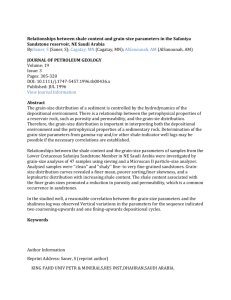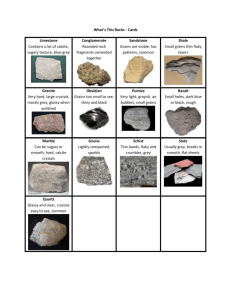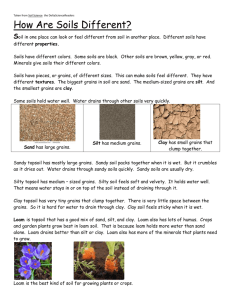Chapter 9 Grain size analysis
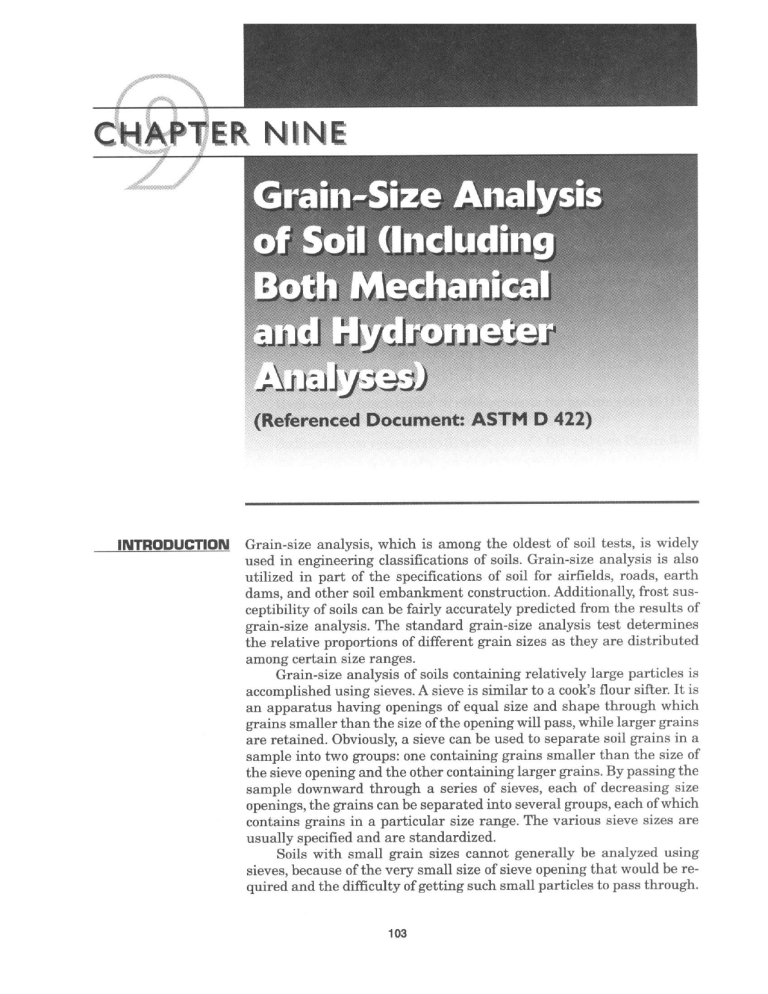
ER NINE
Referenced Document: ASTM D 422
INTRODUCTION Grain-size analysis, which is among the oldest of soil tests, is widely used in engineering classifications of soils. Grain-size analysis is also utilized in part of the specifications of soil for airfields, roads, earth dams, and other soil embankment construction. Additionally, frost sus ceptibility of soils can be fairly accurately predicted from the results of grain-size analysis. The standard grain-size analysis test determines the relative proportions of different grain sizes as they are distributed among certain size ranges.
Grain-size analysis of soils containing relatively large particles is accomplished using sieves. A sieve is similar to a cook's flour sifter. It is an apparatus having openings of equal size and shape through which grains smaller than the size of the opening will pass, while larger grains are retained. Obviously, a sieve can be used to separate soil grains in a sample into two groups: one containing grains smaller than the size of the sieve opening and the other containing larger grains. By passing the sample downward through a series of sieves, each of decreasing size openings, the grains can be separated into several groups, each of which contains grains in a particular size range. The various sieve sizes are usually specified and are standardized.
Soils with small grain sizes cannot generally be analyzed using sieves, because of the very small size of sieve opening that would be re quired and the difficulty of getting such small particles to pass through.
103


